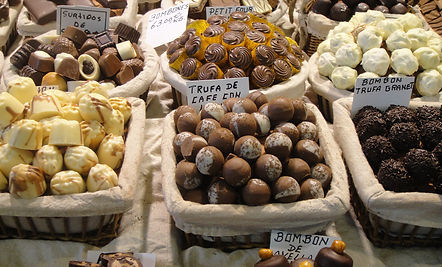The Choclate Prince


Chocolate Production


It is a fact that most people love chocolate. It is the key ingredient in making candy bars, cookies, cakes, milk shakes and cereals. But despite its popularity, not all people are familiar with how the food for the Gods is produced. All they know is that it is a delicious treat anytime of the day.
In order for you to better appreciate each bite, here is a short article to show you how that bar of chocolate reaches you.
Introduction
The earliest record of chocolate can be traced to 2000 years ago in Central America where the climate is very ideal for the cultivation of the Cacao Tree, the source of the chocolate. In Latin, the tree is called as the “Theobroma Cacao” or Food of the Gods.
The name reflects both the heavenly taste and the reverence of the early people for the divine food. The original taste of chocolate drink favored by the early civilization is bitter. This is completely different from the smooth and sweet bars we have today. However, the source remains the same – the cacao bean.
Extraction and Drying
Chocolate production is a time consuming and complicated process. Workers harvest the cocoa pods containing the cocoa beans manually in the forest to prevent damaging the tree. They are then crushed to extract the pulp and fermented naturally for five to eight days, after which, the beans are dried under the sun.
Although there are other methods to dry the beans, the natural process is still considered as the best as it seals in the aroma and taste. Artificially dried beans are of lower quality and they are sold at a lower price.
Roasting and Crushing
Just like coffee beans, the cacao beans are graded and roasted. The time depends on the size and type of the bean. This process is carefully done as it can affect the final flavor of the chocolate. Roasted beans are lightly crushed to separate the kernel or “nib” from the shell. To help develop the color and flavor, the nibs undergo the process of alkalization.
Milling and Liquefaction
Nibs are finely milled and liquefied to produce the cocoa liquor. This is allowed to cool and solidify forming the chocolate. Other ingredients like butter, vanilla, milk and lecithin are added to create various types of chocolates. Sweetener is added to make the product more edible. Otherwise, pure type is so bitter that no one would like to eat it.
Inferior types contain less cocoa solids with most of the chocolate butter replaced by vegetable oil or other fat. This is the reason why chocolates get its undeserved reputation of being fattening and unhealthy. People from different parts of the world add different ingredients to create a distinctive taste. For Europeans, dark chocolate is the most popular while Australians prefer the milk chocolate types.
Refining and Conching
The blended chocolate goes through a refining and conchingprocess to grind and blend the particles and have a smooth and improved texture. The finest chocolate is conched for at least one week and the product is stored in heated tanks until ready for the final process.
Tempering
This is the precise cycle of heating and cooling under carefully controlled condition. This is to ensure that fat crystallizes in its most stable form.Well-tempered products have a snappy good shiny gloss, or brittle bite and a smooth tender melt on the tongue. Tempered chocolates are then poured in molds, shaken, cooled, wrapped and transported to different parts of the world.
Now that you are better informed about chocolate production, grab a bar now and remember the people who worked hard just to satisfy your craving.